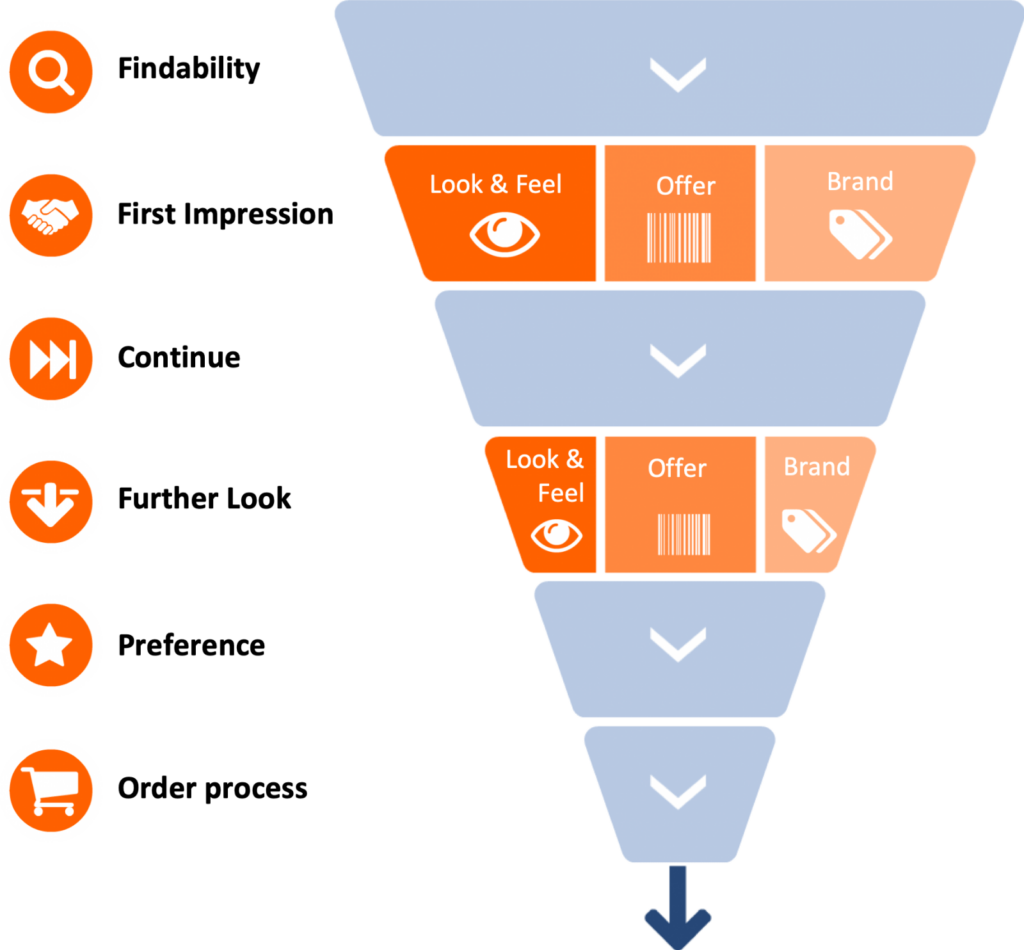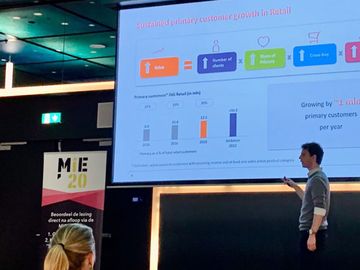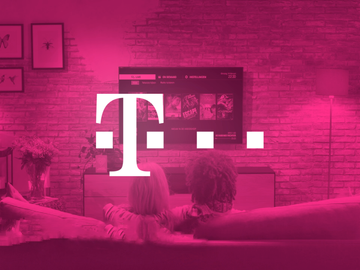
The benefits of benchmarking your customer journey
Whoever works on improving a digital customer journey will encounter all kinds of things along the way. A new brand enters the market, customers can’t find what they are looking for, new products are introduced, prices change, the competition is outstanding and 404 pages, just to name a few. A customer journey is an experience, for you as a product developer and the customer as well. And that journey can be perceived as good or bad, average or excellent. Setting a good customer experience is crucial and decisive in the digital orientation process. In this article, we explain why it makes sense to benchmark this CX-Experience and what the advantages of benchmarking are.
3 reasons to use digital customer journey benchmarking
Becoming the best digitally doesn’t happen overnight. It takes a long breath, a winner’s mentality, and it requires a vision on digital. We are convinced that a focus on the customer is the only way to become and remain successful. By asking questions, one can map out the consumers’ digital experience on your and your competitors’ website. Below in short the benefits of benchmarking your customer journey experience.
1. Benchmarking is second nature to every consumer
Every visitor to your website is also visiting the websites of your competitors. If you don’t know what they’re experiencing there, you can never get your digital priorities right. There is no such thing as the customer journey, there are always multiple customer journeys, and these take place on other digital touchpoints. Not just yours.
2. The market is shifting: from brand loyal to convenience loyal
There are multiple factors that influence the purchase decision, in addition to the digital customer journey. Most consumers nowadays, 98 percent, start their orientation process on a product or service online. Around 70 percent of consumers prefer to resolve problems themselves online, and 89 percent say they would switch providers if their service experience is disappointing. An excellent experience in a customer journey is a necessity.
3. The competition is not standing still
If you as a marketer think you are the only one who is working on the optimization of digital customer journeys, you’re wrong. You need to keep your eyes on the ball to stay ahead of the competition, continuously comparing the quality of your website to others, taking the opinions of potential customers in consideration. Moreover, the playing field is constantly changing and what is good today may actually be the minimum a customer expects tomorrow.
From a vague idea on how to improve your website to using benchmark data to offer the best CX
A lot is said and written about customer journeys, there is confusion about the concept, there are people who are in favor of customer journey thinking, others are against it. At WUA we have been using a rather practical approach for more than 10 years: we give potential clients an orientation task concerning the purchase of a product or service, and we identify what they experience on their customer journey from start to finish (until just before the ‘buy’ or ‘exit’ button is used). This is done using a long questionnaire based on the Digital Sales Model.

Every marketer recognizes the funnel in this model, and that is why the model is structured in such a way. First, as a company or provider of a service, you are either found or not found at the beginning of the customer journey. Then a first impression informed in the aptly-named first impression phase, represented by a ‘score’ on the themes of look & feel, offerings, and brand.
Based on this first impression an important decision is made by the potential customer: do I continue on the website of the service provider I’m currently looking at, or do I give up and look for someone else? If you give up, the customer journey and assessment of the experience of that customer journey starts again. If you continue, you get to the deepening phase.
In this phase too, potential customers assess what they see using the same themes as in the first impression phase. Then they produce their overall opinion and eventually follow their preference and choice of provider. And it is mainly about why that choice was made. Why indeed CZ and not Menzis as their number 1? Or if you’re opening a bank account: Why is Rabobank so much better than ING? Why choose E.ON over Nuon for an energy contract? What is E.ON doing right and what does Nuon need to improve on to be chosen as the number 1?
Learn from the best to win digitally
In recent years we have seen that it is extremely important to get that number 1 position. Online competition has one simple rule: the winner takes all. The best website in a sector is chosen 52.3 percent more often than the number two, according to more than 10 years of research. Therefore, it really pays to look at the best in your industry and beyond: by asking potential customers how they perceive their shopping experience with competitor X, Y or Z, you can start adjusting your own digital domains to become slightly better every day.
If you ask real consumers about real experiences they have at real competitors’ website, best practices emerge that you can implement in order to become better, with the ultimate goal to become the best in your market. We believe this to be a logical choice: not just looking at your own domains and your own figures, feedback tools and analytics reports, but also asking consumers to really look at a competitor’s store and learn from it to stay ahead of that same competitor.
Interesting content? Here you can find all articles in the Customer Journey special (Dutch).


